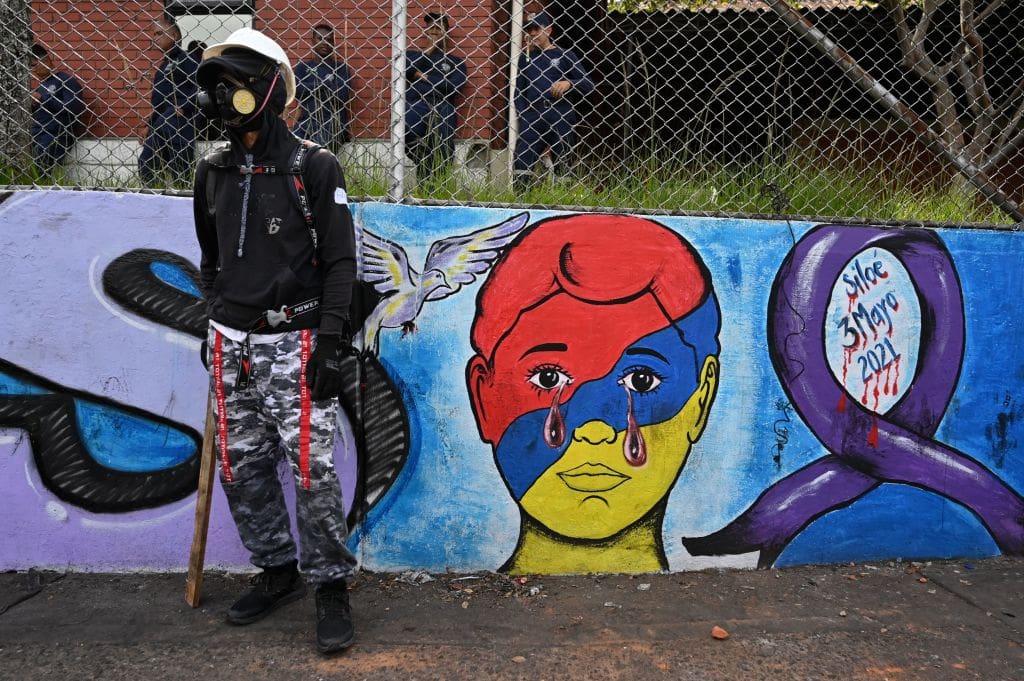“Our meticulous digital reconstruction of the events in Siloe reveals how the Colombian security forces intentionally attacked people who were demonstrating peacefully in order to punish, injure and kill them. Crucially, through the large volume of data that we synthesized, we were able to show that the police did not face an imminent threat of violence, and that their use of lethal weapons was unjustified. The toll of their excessive use of force was the lives of Kevin Agudelo and two other young men,” said Erika Guevara-Rosas, Americas director at Amnesty International.
Amnesty International’s Crisis Evidence Lab and SITU Research analyzed more than 200 pieces of audiovisual material and interviewed multiple witnesses to verify details about “Operation Siloé.” This joint incursion by members of the National Police, the Mobile Anti-Riot Squad (ESMAD) and the Special Operations Group of the Colombian National Police (GOES) targeted people taking part in a vigil at the La Glorieta roundabout in the Siloé neighborhood. That night, several people were arbitrarily detained and hundreds were injured, with three people dying of gunshot wounds, including Kevin Agudelo, a promising 22-year-old soccer player.
“Each video and witness testimony recounts a unique perspective of the night. Some describe communal moments of remembrance, others show chaotic scenes of weapons deployed from seemingly all directions, yet others capture the bloody injuries of protesters carried away to receive treatment. When aggregated in time and space, these experiences build a synthesized picture of what unfolded on May 3: a carefully orchestrated assault on a peaceful vigil,” said Bora Erden, Senior Researcher at SITU Research.
Amnesty International found evidence indicating that live ammunition was used against protesters, such as photos of shell casings, bullet holes and the sound of gunfire. The organization verified videos taken prior to the attack and was able to determine that there were police officers present close to where Kevin died and that they were firing 5.56mm Tavor rifles. The evidence shows that there was no imminent threat of violence that could not reasonably have been addressed by the security forces with more proportionate measures.
“We didn’t have any kind of protection and we couldn’t get away before the gunshots and tear gas started streaming out from different directions… it was excessive, we were not armed nor did we have any way to respond to that arsenal… they used rifles that are used in war, the only thing we could do was run for our lives, Kevin was with us,” a witness told Amnesty International.
Amnesty International’s Digital Verification Corps confirmed the presence of two helicopters in the area, while witnesses described the unlawful and excessive deployment of tear gas using Venom, a weapons system whose prescribed use is to disperse a violent crowd. Since the security forces used it at night, from above, and on peaceful protesters who did not know where to disperse, its use was unjustified and inappropriate. Rather than a legitimate attempt to restore public order, using tear gas in this way indicates the intention to facilitate a military attack.
“The security forces were aware of the deadly capability of their weapons and yet they fired at will in a place where there were young people, children and adults who had to run for their lives. The launch of an operation of this magnitude, as if it were a confrontation with armed actors and not a peaceful protest, is indicative of the warlike nature of the response to the protests related to the national strike in Cali,” said Erika Guevara-Rosas.
“We hope that the Attorney General’s Office will make advances in the investigation into the death of Kevin Agudelo and the other serious human rights violations committed during Operation Siloé and, if there is sufficient and admissible evidence against those suspected of criminal responsibility, bring them to justice in a fair trial before ordinary civilian courts. This is the first step towards building a Colombia where human rights are respected; it is imperative that impunity does not prevail for these serious crimes.”
Additional information
Amnesty International has documented extensively the repressive actions of the National Police in the context of the 2021 National Strike, including excessive use of force, disappearances and sexual violence against protesters, and attacks against Indigenous peoples.
In the report Cali: In the Epicenter of Repression published last July, Amnesty International documented unlawful repression, urban paramilitarism, unlawful detention and torture of peaceful protesters and pointed to the real goals behind this repression: to instill fear, discourage peaceful protest and ultimately punish those demanding change in the country.
In November, together with the local organizations Temblores and PAIIS, Amnesty International published another report, Shoot on sight, which documented the cases of 13 victims of eye trauma and analyzed more than 300 pieces of audiovisual material on the disproportionate and repressive actions of ESMAD between April 28 and October 20.
Read more:
Repression in the spotlight (Campaign, February 25, 2022) https://www.amnesty.org/en/latest/campaigns/2022/02/repression-in-the-spotlight/
Colombia: Shoot on Sight: Eye Trauma in the Context of the National Strike (research, November 26, 2021) https://www.amnesty.org/en/documents/amr23/5005/2021/en/
Cali: In the Epicenter of Repression (research, July 30, 2021) https://www.amnesty.org/en/documents/amr23/4405/2021/en/
Tear Gas: An Investigation (2020) https://teargas.amnesty.org/
Contact: Gabby Arias, [email protected]

